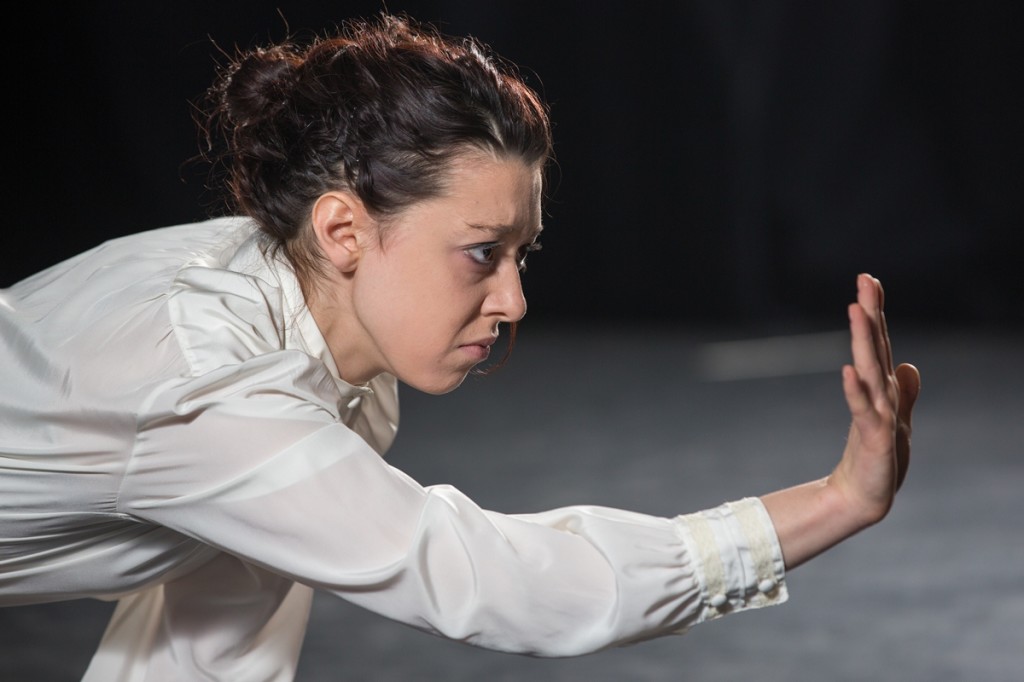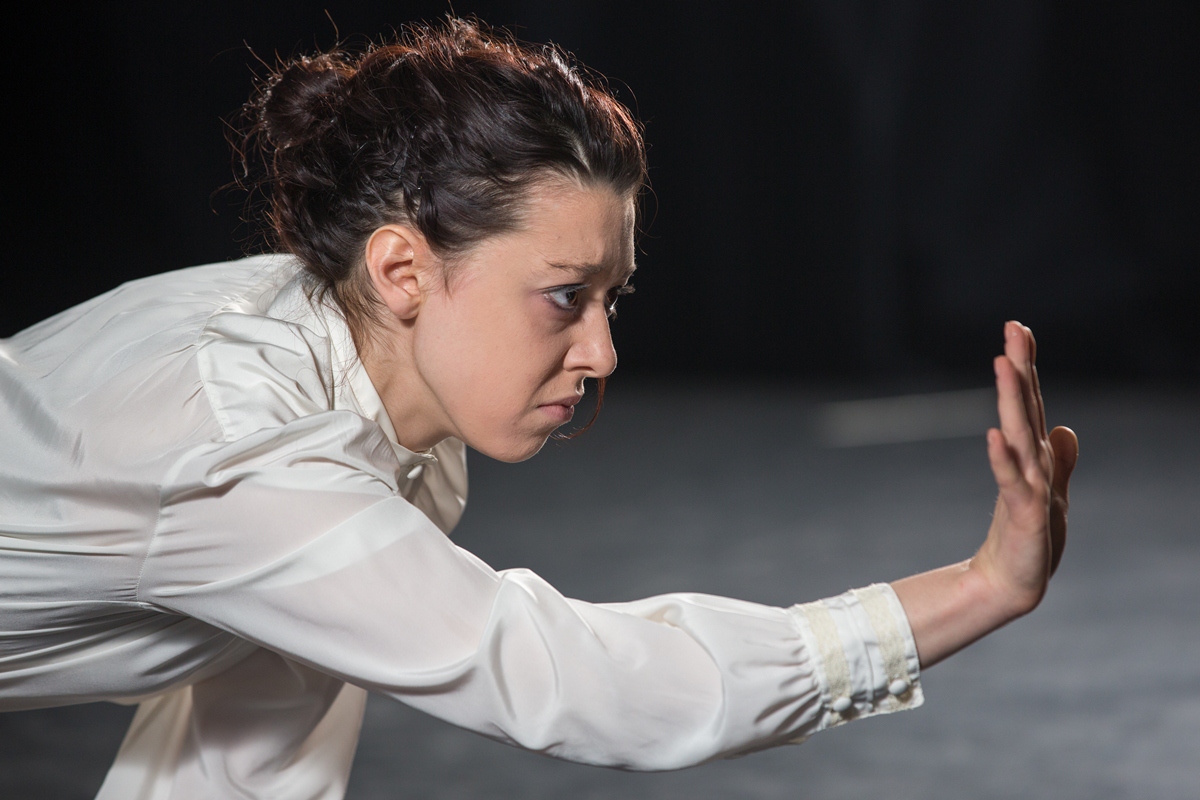
Jane enters the room and sits on the folding chair that’s been placed beside the bed they’ve created out of a stained folding table. She clasps her hands in her lap and crosses her ankles.
“What is your relationship with the wallpaper?” director Jen Cressey asks from across the room. Jane raises her eyes and answers in a despairing, timid voice that has a distinctive Victorian era intonation.
“I’m not quite sure, it’s obviously there and it’s what I’m looking at and it’s what I can engage with. I guess right now I’m just very, very sad. I’m sad that my husband didn’t listen to me and that I wasn’t important enough to listen to. I’m very sad that as hard as he tries he won’t be able to make me better.”
The year is 1899. Jane has just given birth to her first child, a boy. Unfortunately, she is suffering from postpartum depression. Her husband, John, a physician, is treating her. He has prescribed bed rest, a diet heavy in meat and absolutely no writing or other artistic activity.
“I tried very hard. I tried very, very hard to follow what he wanted me to do but none of it really worked, it only ever made me more upset and more deceitful,” Jane laments.
She spends her days in her room at the rental house they’ve leased for the summer. The room looks like it might have previously been a children’s nursery; the windows are barred and there are rings in the wall like one might see in a gymnasium. Furthermore, the floor is scratched and gouged and there is a black “smooch” running around the base of the room. Most notably, however, is the yellow wallpaper. The paper is peeling in places, it is stripped off in great patches all around the head of the bed, about as far as you can reach while lying on your back and in a great place on the other side of the room near the baseboard.
Natasha Perry-Fagant, who embodies Jane onstage, believes that John loves Jane very much and only wants her to get better.
“He loves her very, very deeply and he just thinks if she just believed in this treatment, if she just actively participated and put these thoughts out of her head, she would get better.” The reality is that Jane is not thriving within John’s confinement treatment, though she tries her best. She finds herself getting more and more depressed.
It’s been a 114 years since Charlotte Perkins Gilman first put Jane onto paper in the form of a short story called “The Yellow Wallpaper”. She put her there as a way to set her free from the confines set upon her by her husband. For a century she’s lived and thrived within the text, opening society’s eyes to her situation and consequently that of many women like her.
Now, three women are trying to bring her out and onto the stage so her story can impress the world in a new fashion. Perry-Fagant is serving as a conduit through which Jane can speak. Cressey is in charge of facilitating Jane’s emergence. She takes on the role of therapist in order to help Jane connect to her feelings and she directs the portrayal of Jane’s story as it will appear onstage.
Miranda Abraham keeps everything running smoothly. She makes notes on every decision that is made concerning Jane’s staging and sets up the appropriate set pieces. The women have been working on bringing Jane forth since the winter semester of 2012. It has been a long process, but their devotion to having Jane come across as accurately as possible speaks to their love for her.
As Perry-Fagant is where Jane resides for the most part, she often finds that Jane takes over outside of rehearsal. Sometimes Perry-Fagant will realize she’s thinking Jane’s thoughts or seeing things through Jane’s eyes, “Sometimes, I’ll be walking down the street and I’ll turn into Jane,” she said.
In the play, Jane is preoccupied with the wallpaper in her room.
“This wallpaper has a kind of sub-pattern in a different shade, a particularly irritating one, for you can only see it in certain lights, and not clearly then. But in the places where it isn’t faded and where the sun is just so, I can see a strange, provoking, formless sort of figure, that seems to skulk about behind that silly and conspicuous front design,” she explains from her text.
Jane finds in the yellow wallpaper an engagement she can’t get from John. Confined as she is in her room, the paper becomes her escape from reality. She’s been spending all her time staring at the paper, peeling away the paper in spots, she thinks, John won’t notice. She sees something in the pattern of the wallpaper, she sees something…
Jane, why are you touching the paper so? What is it that you see there?
“A woman. A woman trapped within the pattern. She’s out. She’s gotten out!”
Round and round the room she goes, creeping along the baseboard, dragging her body around and around the room.
“What is the matter? For God’s sake, what are you doing!”
Jane smiles, “Creeping.”
The SIPA Short Works Festival will take place from March 7 – 10 at the Cazalet Theatre on Concordia’s Loyola Campus. Tickets are $2 per show for students and $5 general admission. For more information visit Facebook.com/SipaConcordia.





Read the Yellow Wallpaper in CEGEP and loved it! Wish I saw this article earlier! Would have loved to see it!
The Yellow Wallpaper is playing
Friday, March 8 at 8:45pmSaturday, March 9 at 9:00pmSunday, March 10 at 2:00pm
And be sure to check out all of the shows. Thank you for the wonderful article 😀